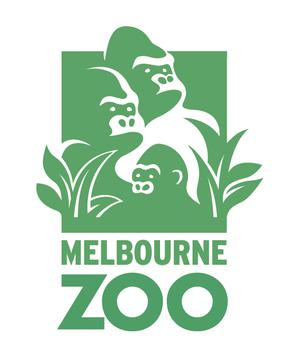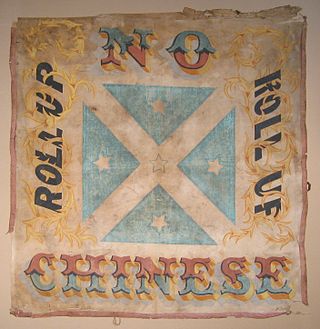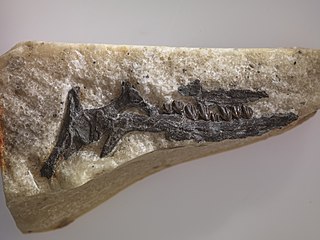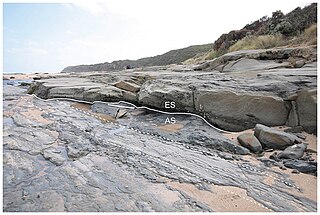
A humane society is a group that aims to stop cruelty to animals. In many countries, the term is used mostly for societies for the prevention of cruelty to animals (SPCA). In the United Kingdom, and historically in the United States, such societies provide waterway rescue, prevention and recovery services, or may give awards for saving human life.

Baron Sir Ferdinand Jacob Heinrich von Mueller, was a German-Australian physician, geographer, and most notably, a botanist. He was appointed government botanist for the then colony of Victoria (Australia) by Governor Charles La Trobe in 1853, and later director of the Royal Botanic Gardens, Melbourne. He also founded the National Herbarium of Victoria. He named many Australian plants.

Melbourne Zoo is a zoo in Melbourne, Australia. It is located within Royal Park in Parkville, approximately 4 kilometres (2.5 mi) north of the centre of Melbourne. It is the primary zoo serving Melbourne. As of 2021 the zoo contains 3742 animals comprising 243 species, from Australia and around the world. The zoo is accessible via Royal Park station on the Upfield railway line, and is also accessible via tram routes 58 and 19, as well as by bicycle on the Capital City Trail. Bicycles are not allowed inside the zoo itself.


Leaellynasaura is a genus of small herbivorous ornithischian dinosaurs from the Albian stage of the Early Cretaceous, first discovered in Dinosaur Cove, Australia. The only known species is Leaellynasaura amicagraphica. It was described in 1989, and named after Leaellyn Rich, the daughter of the Australian palaeontologist couple Tom Rich and Patricia Vickers-Rich who discovered it. The specific name, amicagraphica, translates to "friend writing" and honours both the Friends of the Museum of Victoria and the National Geographic Society for their support of Australian paleontology.

Alfred William Howitt, , also known by author abbreviation A.W. Howitt, was an Australian anthropologist, explorer and naturalist. He was known for leading the Victorian Relief Expedition, which set out to establish the fate of the ill-fated Burke and Wills expedition.
Serendipaceratops is a genus of herbivorous ornithischian dinosaur, possibly an ankylosaur, from the early Cretaceous Period of Australia. The type species, S. arthurcclarkei, was named in 2003.

The Royal Society of Victoria (RSV) is the oldest scientific society in Victoria, Australia.
William D. Rubinstein is a historian and author. His best-known work, Men of Property: The Very Wealthy in Britain Since the Industrial Revolution, charts the rise of the 'super rich', a class he sees as expanding exponentially.

Nikolai Stepanovich Turczaninow was a Russian botanist and plant collector who first identified several genera, and many species, of plants.

Gahnia is a genus of sedges native to China, Southeast Asia, New Guinea, Australia, New Zealand and a number of Pacific Islands. The common name is due to the toothed margins. It often forms tussocks.

The Eumeralla Formation is a geological formation in Victoria, Australia whose strata date back to the Early Cretaceous. It is Aptian to Albian in age. Dinosaur remains are among the fossils that have been recovered from the formation, particularly from the Dinosaur Cove locality.
Bishops is an extinct genus of mammals from Early Cretaceous of Australia. The only recorded species, Bishops whitmorei, was found on Flat Rocks, Wonthaggi Formation, Victoria. The genus was named in honour of Dr Barry Bishop, the former Chairman of the Committee for Research and Exploration, National Geographic Society.

Coprosma repens is a species of flowering shrub or small tree of the genus Coprosma, in the family Rubiaceae, native to New Zealand. Common names include taupata, tree bedstraw, mirror bush, looking-glass bush, New Zealand laurel and shiny leaf.
The Greek Precinct, Melbourne in Victoria, Australia, is a Greek cultural area centred on the eastern end of Lonsdale Street in the Melbourne city centre. The area runs adjacent to Melbourne Chinatown on Little Bourke Street.
Princess Royal is an abandoned town in the Goldfields–Esperance region in Western Australia. It was named after a gold mine that was the basis for the town. The mine was named after Victoria, Princess Royal, eldest daughter of Queen Victoria. It was located near Norseman.

Patricia Arlene Vickers-Rich, also known as Patricia Rich, is an Australian Professor of Palaeontology and Palaeobiology, who researches the environmental changes that have impacted Australia and how this shaped the evolution of Australia’s fauna and flora.
Ian Francis McLaren, M.A., Dip. Com., D. Litt.,, F.R.H.S.V., was an Australian politician, accountant, businessman, historian, bibliographer and book-collector.
The Ngintait, or Ngindadj, are an Australian Aboriginal peoples of the northwest corner of the state of Victoria, and partly in South Australia. 9 people, all of one family, claim descent from the tribe, which was dispersed in the 19th century.
The Minjambuta were an Indigenous Australian tribe of northern Victoria.















